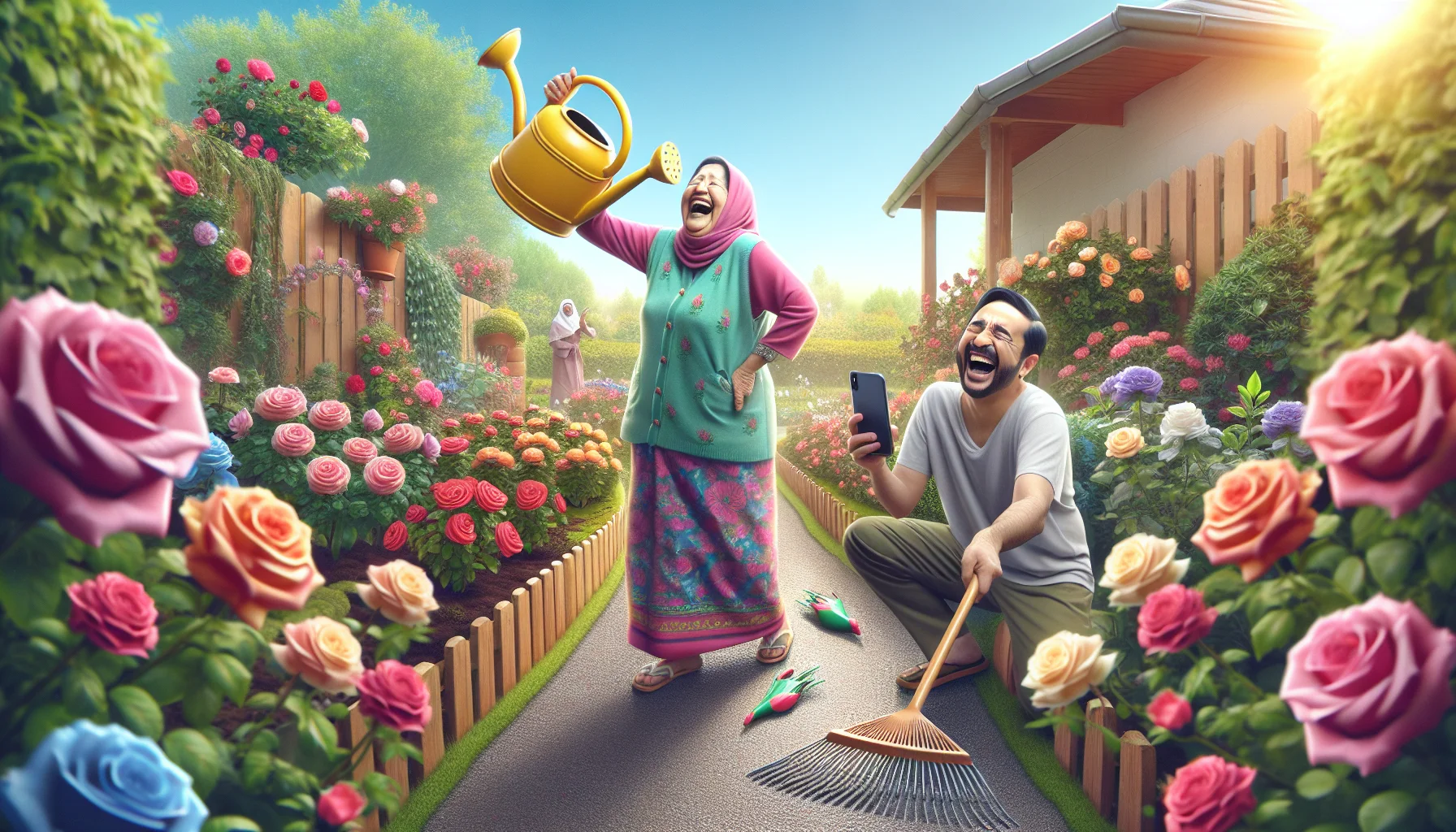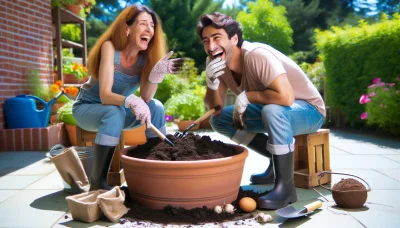Rose garden design Quiz
Test Your Knowledge
Question of
Introduction to Rose Garden Design
Designing a rose garden is an enriching process that combines horticultural knowledge with aesthetic sensibility. The first step in creating a beautiful rose garden is choosing the right location. Roses thrive in areas that receive at least six hours of direct sunlight daily. It's also essential to consider the soil quality; roses prefer well-drained, rich soil with a neutral pH. Preparing the soil by incorporating organic matter can significantly improve its structure and fertility, providing a healthy foundation for your roses. Selecting rose varieties is another critical aspect. Consider factors like climate tolerance, growth habit, and disease resistance in addition to color and fragrance. By carefully planning and considering these elements, you can design a rose garden that will provide beauty and enjoyment for years to come.
Planning Your Rose Garden Layout
Designing the layout of a rose garden is an exciting endeavor that combines creativity with horticultural knowledge. The key to a beautiful rose garden lies in careful planning and consideration of various factors such as color schemes, the size of the garden, and companion planting. A well-planned garden layout can enhance the aesthetic appeal of your space, promote healthier plants, and create a cohesive look. Color schemes play a crucial role in setting the mood and harmony of your garden. Whether you prefer a monochromatic theme or a vibrant mix of colors, choosing the right hues can make a significant difference. Additionally, the size of your garden will determine how many plants you can accommodate and how they can be arranged for optimal growth and visual appeal. Companion planting is also essential, as certain plants can benefit roses by deterring pests, improving soil health, and enhancing the overall beauty of the garden.
- Assess the available space to determine the size of your rose garden.
- Decide on a color scheme that matches your personal preference and the overall design of your outdoor space.
- Research and select rose varieties that fit your color scheme and are suitable for your climate.
- Consider companion plants that can coexist with your roses, offering both aesthetic and practical benefits.
- Sketch a layout plan, placing taller varieties at the back and shorter ones in front, ensuring each plant has enough space for air circulation and growth.
- Prepare the soil by adding organic matter and ensuring proper drainage to create a healthy environment for your roses.
- Plant your roses and companions according to your layout plan, taking care to space them appropriately.
Selecting Roses for Your Garden
Choosing the right rose varieties for your garden involves considering several factors to ensure they thrive and enhance your garden's beauty. Firstly, consider the climate of your area. Roses require at least six hours of sunlight daily, but some varieties are better suited to hot or cold climates than others. Disease resistance is another critical factor; look for varieties known to be resistant to common rose diseases like black spot and powdery mildew, as this will save you a lot of trouble in the long run. Lastly, consider the bloom times of the roses you select. While some roses bloom once in the season, others offer multiple bloom cycles, providing continuous color and interest in your garden. By taking these factors into account, you can select rose varieties that will thrive and complement your garden design.
- Hybrid Tea Roses - Known for their large blooms and vibrant colors, perfect for formal garden designs.
- Floribunda Roses - Feature clusters of blooms, offering a more continuous display of flowers, ideal for borders and beds.
- Climbing Roses - Great for adding height and structure by growing on walls, fences, and trellises.
- Shrub Roses - Hardy and disease-resistant, these roses are versatile and can be used for hedges or as standalone plants in a casual garden setting.
- David Austin Roses - Renowned for their exquisite beauty, fragrance, and repeat flowering, they are perfect for creating an English garden atmosphere.
Rose Garden Care and Maintenance
Maintaining a rose garden requires attention to several key practices to ensure your roses thrive. Proper watering, fertilizing, pruning, and disease control are essential for healthy plants. Watering should be done deeply but infrequently to encourage strong root growth, while fertilizing needs are specific to the soil and rose types in your garden. Pruning is crucial for promoting air circulation and preventing disease, and should be done at the right time of year for your climate. Monitoring for pests and diseases and addressing problems early is also critical for maintaining a vibrant rose garden.
- Water roses deeply but infrequently to promote root growth.
- Use a fertilizer formulated for roses, applying it at the recommended times throughout the growing season.
- Prune roses in early spring to remove dead or diseased wood and to shape the plant.
- Keep an eye out for common rose diseases like black spot and powdery mildew, and treat them promptly.
- Ensure good air circulation around your roses to reduce the risk of disease.
- Mulch around the base of roses to help retain moisture, regulate soil temperature, and suppress weeds.
- Choose disease-resistant rose varieties when planning your garden to reduce maintenance needs.
Incorporating Hardscape Elements
Enhancing rose garden designs with hardscape elements can transform a simple garden into a stunning outdoor sanctuary. Arbors, trellises, pathways, and benches not only add structure and elegance but also support and showcase the beauty of the roses. Integrating these elements requires thoughtful planning to ensure they complement the roses and do not overshadow them. Arbors and trellises can be used to create vertical interest and support climbing roses, offering a spectacular display of blooms. Pathways add functionality and define the space, guiding visitors through the garden to explore its beauty. Benches provide a place to sit and enjoy the fragrant surroundings, making the garden a more inviting and relaxing space.
- Position arbors at the entrance or along pathways to serve as a grand entryway or focal point.
- Use trellises to support climbing roses, creating living walls that can provide privacy or backdrop.
- Design pathways with materials that complement the garden's style, such as brick, stone, or mulch, to create a cohesive look.
- Place benches in shaded areas or viewpoints where the best displays of roses can be appreciated.
- Incorporate decorative elements like bird baths or sculptures to add interest and attract wildlife.
Rose Garden Design Inspirations
Designing a rose garden can transform your outdoor space into a sanctuary of beauty and fragrance. Whether you are looking to create a serene retreat, a vibrant display of colors, or a modern minimalist garden, incorporating roses can add a touch of elegance and charm. Consider these design themes to inspire your own rose garden creation.
| Theme | Characteristics | Best Roses to Use |
|---|---|---|
| Formal | Symmetrical layouts, geometric shapes, neatly trimmed hedges | Hybrid Tea Roses, Floribundas, Grandifloras |
| Cottage | Informal, abundant, mixed with perennials and annuals | David Austin Roses, Climbing Roses, Shrub Roses |
| Modern | Minimalist design, bold color contrasts, architectural plants | Landscape Roses, Miniature Roses, Knock Out Roses |












